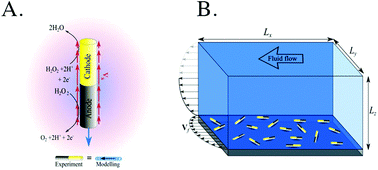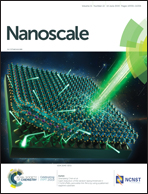Fight the flow: the role of shear in artificial rheotaxis for individual and collective motion†
Abstract
To navigate in complex fluid environments, swimming organisms like fish or bacteria often reorient their bodies antiparallel or against the flow, more commonly known as rheotaxis. This reorientation motion enables the organisms to migrate against the fluid flow, as observed in salmon swimming upstream to spawn. Rheotaxis can also be realized in artificial microswimmers – self-propelled particles that mimic swimming microorganisms. Here we study experimentally and by computer simulations the rheotaxis of self-propelled gold–platinum nanorods in microfluidic channels. We observed two distinct modes of artificial rheotaxis: a high shear domain near the bottom wall of the microfluidic channel and a low shear regime in the corners. Reduced fluid drag in the corners promotes the formation of many particle aggregates that rheotax collectively. Our study provides insight into the biomimetic functionality of artificial self-propelled nanorods for dynamic self-assembly and the delivery of payloads to targeted locations.



 Please wait while we load your content...
Please wait while we load your content...